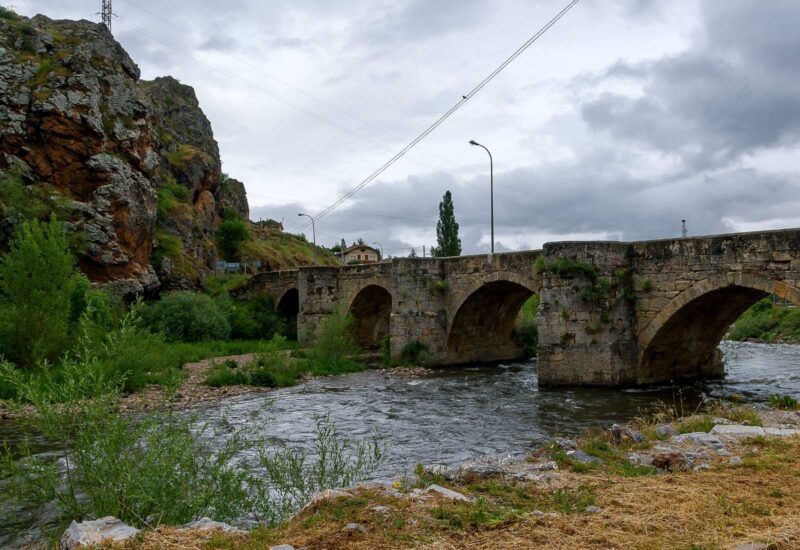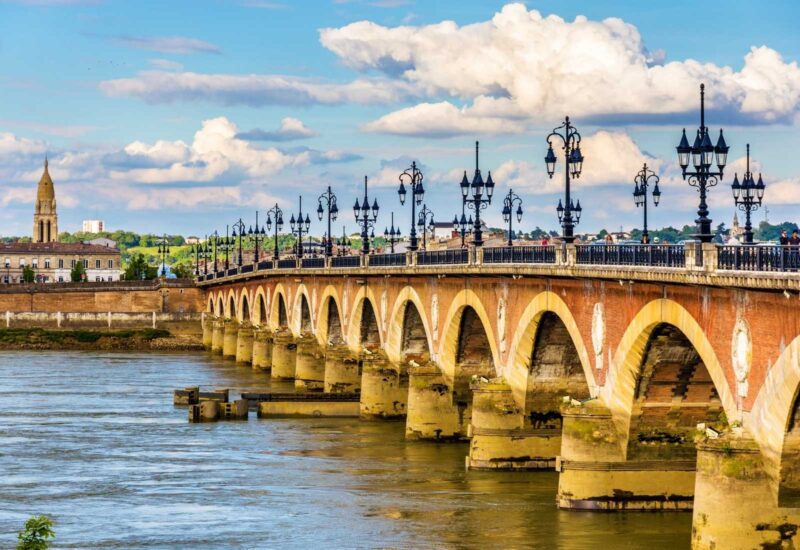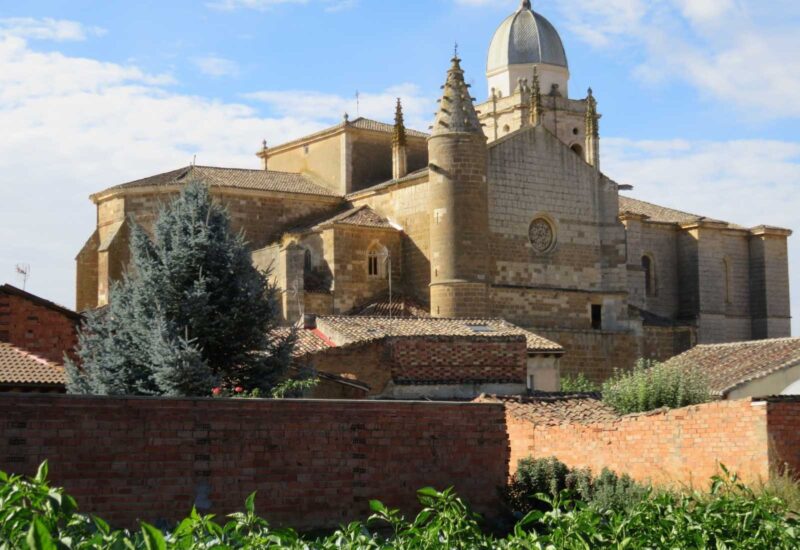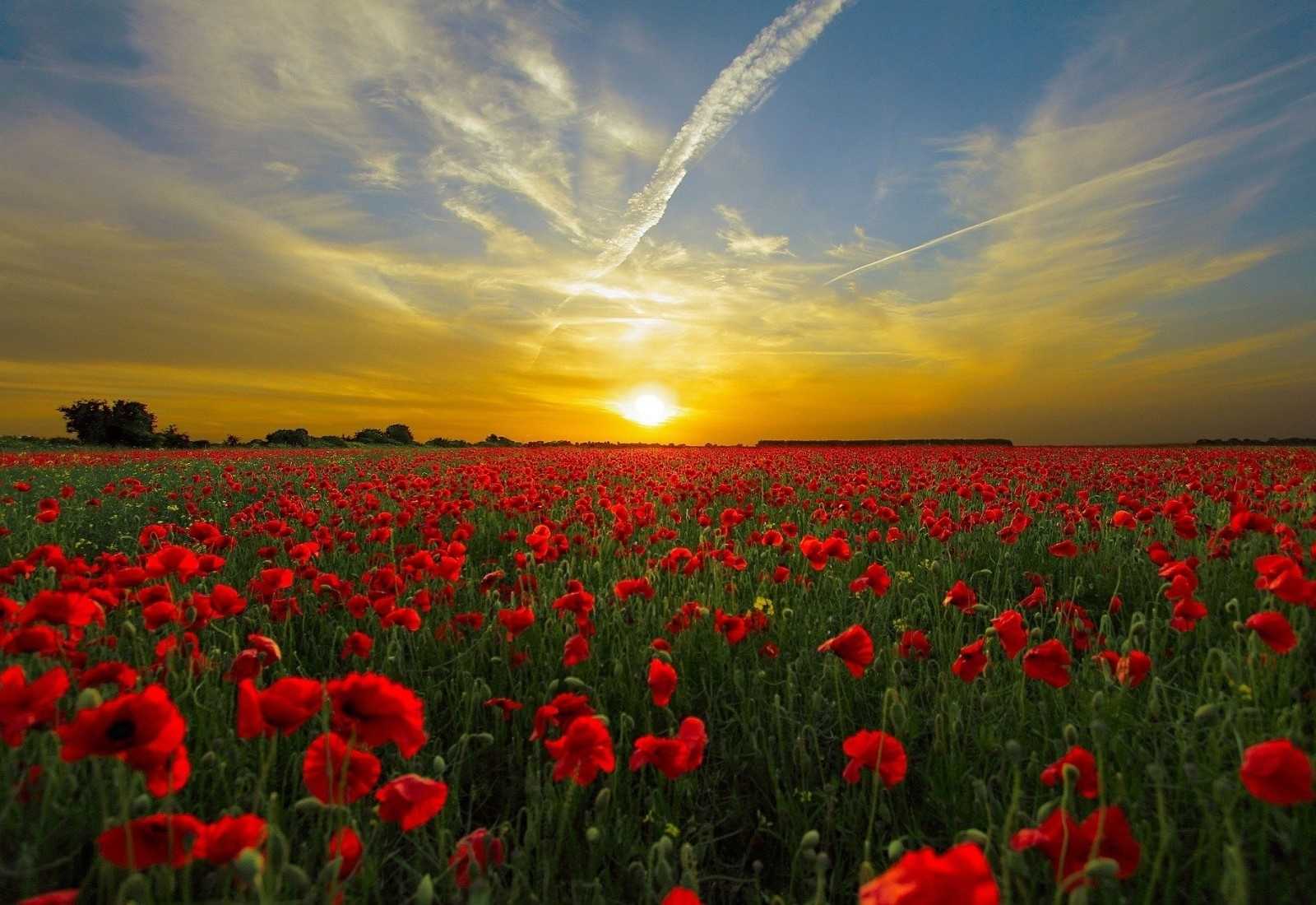The Aquitania Way, in its Castilian stretch, stands as a living testament to history, bridging the Roman past with the Jacobean tradition. This ancient road, which crossed the Castilian plateau, served as a vital artery for trade and communication in Roman Hispania. Over time, it became part of the Camino de Santiago, guiding pilgrims through landscapes rich in cultural and spiritual heritage. In this article, we delve into the legacy of the Aquitania Way in Castilla, uncovering its historical remains, its connection to the Jacobean route, and the reasons why it remains a unique choice for those seeking to walk amidst history and nature. Shall we embark on this journey?

The Aquitania Way Along the Pisuerga
An Ancient Roman Road
The construction of roads and highways during the Roman civilization in Europe was one of the most significant advancements in Ancient History, and they have been traveled for centuries. In fact, many of them are still preserved and even used today. Numerous sections of the Jacobean routes continue to follow these ancient paths, such as the Via XIX along the Portuguese Way, or the case of the restored Aquitania Way—an overlooked stretch of the Jacobean route that is now experiencing a revival.
The Routes to Santiago Throughout History
Originally, during Roman times, the Aquitania Way connected Narbonne with Bordeaux, passing through Toulouse, covering a total distance of 400 kilometers and linking Italy with France. Later, as an extension of this route, the Via XXXIV Ab Asturica Burdigalam was developed, connecting Bordeaux with Astorga. Centuries later, during the Middle Ages, it was also known as the Aquitania Way and served as the road that many medieval pilgrims used to reach Santiago from this region in southern France.

The Aquitania Way in Bordeaux
As it passed through the Iberian Peninsula on its way to Santiago de Compostela, the Aquitania Way was the preferred route for crossing the northern part of the peninsula until at least the 11th century. It served as the best connection to France and Europe, although its path was not the same as the later and current French Way of the Camino de Santiago. Like today, this route began in Roncesvalles and passed through Navarra, but then continued through the Basque Country before entering Castilla y León, crossing the provinces of Burgos, Palencia, and León, where it joined the current French Way in Astorga.
In its early days, the journey to Santiago was a dynamic route that adapted its course according to the advances of the Reconquista from Asturias toward the southern Castilian plateau.
Eventually, this route along the Aquitania Way fell out of use in favor of what we now know as the French Way of the Camino de Santiago. With the territorial expansion of the Reconquista, the Castilian plateau was repopulated, and churches, monasteries, hospitals, and later towns and new infrastructures such as crossings and bridges were built, offering pilgrims a more convenient and accessible path.
The Aquitania Way Today
It remains alive in the collective memory and historical pilgrim records, and for that reason, it should not be forgotten. Efforts to restore this route began in 2018, gradually gaining shape and momentum. Although progress was temporarily halted due to the COVID-19 pandemic, the Aquitania Way is steadily working toward a revival.
As Amando Calzada, president of the Friends of the Camino de Santiago Aquitania Way Association, explains, the focus is on improving the route and properly marking it. From there, promotion efforts will follow, including printed brochures with QR codes and a strong presence on social media.
This section spans 74 kilometers between the provinces of Burgos and Palencia, running parallel to the modern French Way. It begins in Tardajos (Burgos) and passes through towns like Sasamón (Burgos), Melgar de Fernamental (Burgos), Osorno (Palencia), and Carrión de los Condes (Palencia), where it reconnects with the current French Way. Many more towns have joined this initiative, along with 150 supporting members.

The Aquitania Way in Burgos
In this section, formerly known as the “Carrera Francesa,” efforts are underway to finalize signage, which is almost complete, and services for pilgrims are already assured. Hostels like the one in Melgar provide rest and comfort for pilgrims, and there are plans to build more in the near future.
“It’s important to note that this area boasts the highest concentration of heritage sites in the province of Burgos.”
Indeed, and not just in Burgos but also in Palencia, the Aquitania Way offers a rich cultural heritage, with towns designated as historic-artistic sites and even listed as Assets of Cultural Interest. Moreover, this initiative to promote tourism is both sustainable and can help combat depopulation, a constant challenge for these areas.
A Route with a Past, Present, and Future
We can’t wait to explore the Aquitania Way, though we’ve already gotten a glimpse through the promotional video we shared above… How about you? Will you join us on the Camino de Santiago?












VERY COOL! I just finished walking over 1100km this summer on the French way. Such a magical experience, and I look forward to taking this new and improved route on my next adventure. Though I must admit, I think my next trek will be the northern route. ❤️🤘